Top OpenTelemetry Tools Most Suited for OpenTelemetry Data
OpenTelemetry is a Cloud Native Computing Foundation(CNCF) project aimed at standardizing the way we instrument applications for generating telemetry data(logs, metrics, and traces). OpenTelemetry lets you export the data it collects to any backend of your choice.

In this article, we will discuss some of the top OpenTelemetry tools that are tailored to support OpenTelemetry data, offering valuable insights into the functioning and optimization of applications.
But before that, let’s have a brief overview of OpenTelemetry.
What is OpenTelemetry?
OpenTelemetry is an open-source collection of tools, APIs, and SDKs that aims to standardize the way we generate and collect telemetry data. It follows a specification-driven development. The OpenTelemetry specification has design and implementation guidelines for how the instrumentation libraries should be implemented. In addition, it provides client libraries in all the major programming languages which follow the specification.
OpenTelemetry was formed after the merger of two open-source projects - OpenCensus and OpenTracing in 2019. Since then, it has been the go-to open-source standard for instrumenting cloud-native applications.
The specification is designed into distinct types of telemetry known as signals. Presently, OpenTelemetry has specifications for these three signals:
- Logs
- Metrics and
- Traces
The application code is instrumented using OpenTelemetry client libraries, which enables the generation of telemetry data. Once the telemetry data is generated and collected, OpenTelemetry needs a backend analysis tool to which it can send the data.
Top OpenTelemetry Tools compatible with OpenTelemetry data
In this section, we will look at some of the OpenTelemetry tools that are compatible with OpenTelemetry data.
- SigNoz
- Jaeger
- Prometheus
- Honeycomb
- Datadog
- New Relic
SigNoz
SigNoz is a full-stack open-source OpenTelemetry tool built to support OpenTelemetry. It supports OpenTelemetry semantic conventions and provides visualization for all three distinct types of signals (logs, metrics, and traces) supported by OpenTelemetry.
SigNoz leverages the power of ClickHouse, a columnar database. This approach has been adopted by major industry players like Uber and Cloudflare for highly effective log analytics.
SigNoz comes with out-of-the-box visualization of things like RED metrics (requests, errors, and duration).
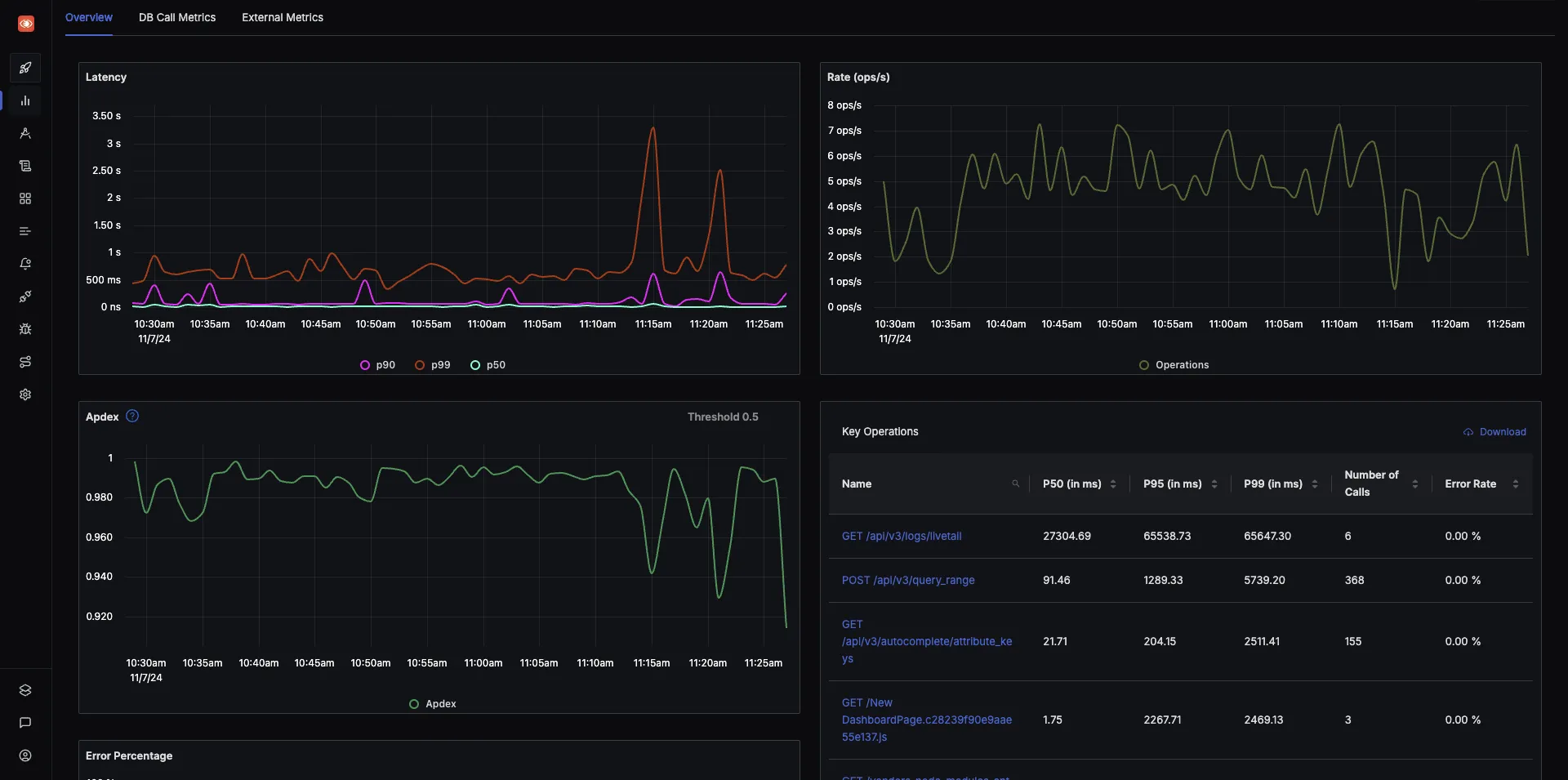
SigNoz also provides detailed views of tracing data in the form of Flamegraphs and Gantt charts. Gantt charts make it easy to visualize your services and events in a parent-child relationship tree. You can easily figure out which events are causing latency in a request call. All of this comes out of the box with SigNoz.

Jaeger
Jaeger is an open-source distributed tracing tool used to monitor and troubleshoot applications based on microservices architecture. It provides deep visibility into the flow of requests and transactions as they traverse through various services within a complex architecture.
You can send traces collected with OpenTelemetry to Jaeger.
Key features of Jaeger include:
- Monitoring distributed transactions
- Root cause analysis
- Performance and latency optimization
- Service dependency analysis
- Distributed context propagation
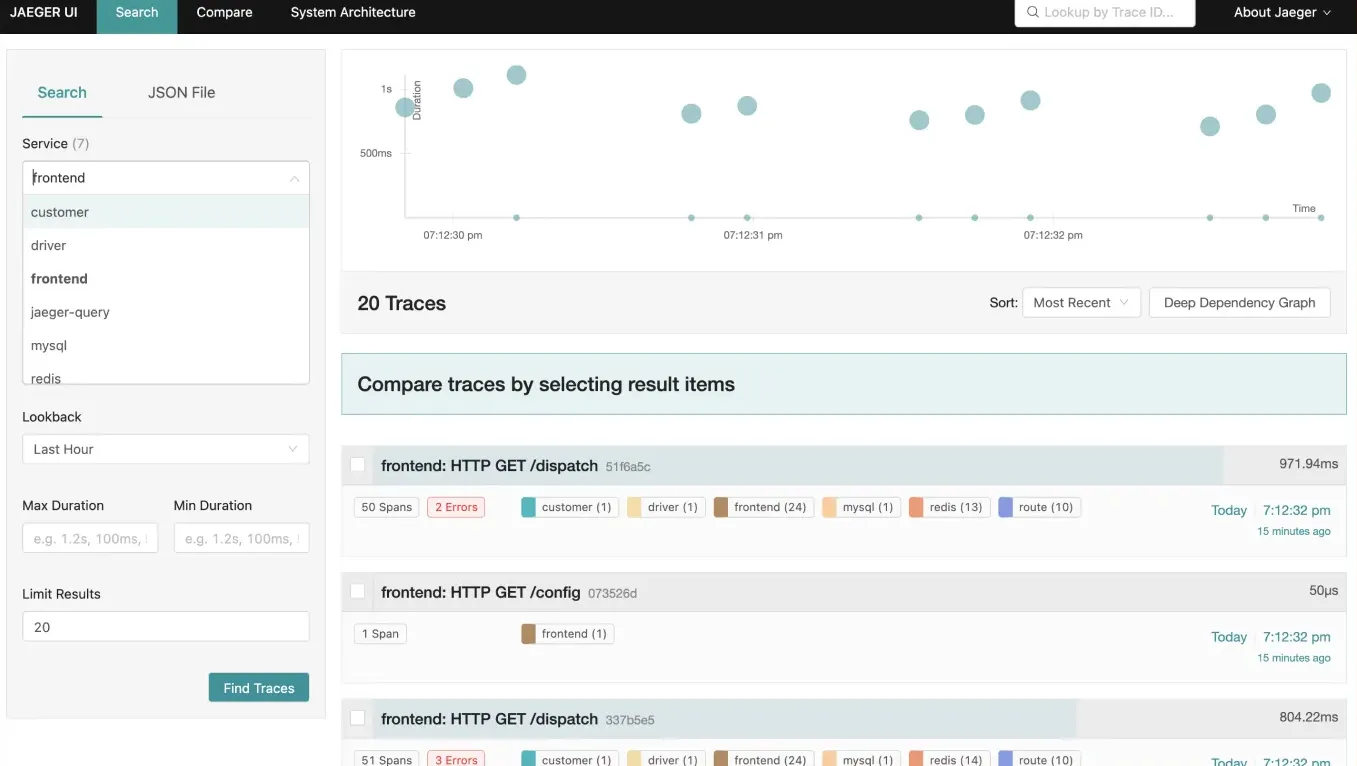
Prometheus
Prometheus is an open-source metrics monitoring and alerting toolkit designed to monitor the performance and health of various components in a distributed system. It excels at collecting time-series data, making it particularly effective for tracking metrics and trends over time. Prometheus employs a pull-based model, where it scrapes data from instrumented applications and services at regular intervals.
If you want to do just OpenTelemetry metrics, then Prometheus can be a good choice.
Some of the key features of Prometheus are:
- Multi-dimensional data model
- A query language called PromQL to query the metrics data collected
- Pull model data collection over HTTP
- An alert manager to handle alerts
The only challenge with Prometheus is its basic visualization layer. You must combine it with a tool like Grafana to get better metrics visualization.
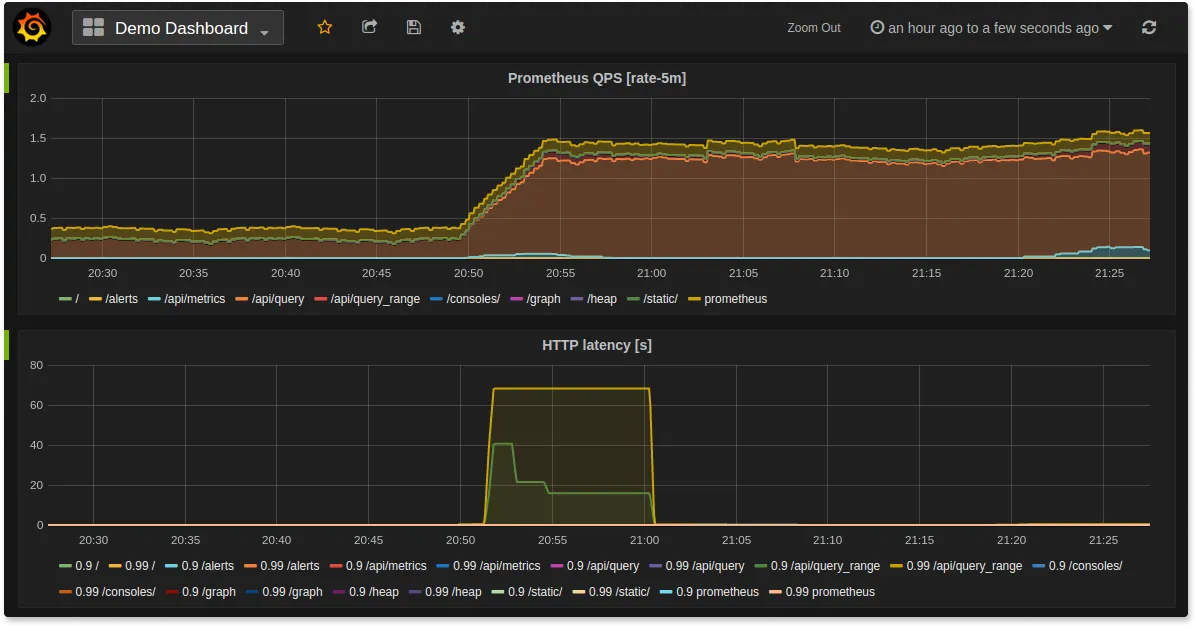
Honeycomb
Honeycomb is a full-stack cloud-based observability tool with support for events, logs, and traces, enabling software engineering teams gain deep insights into the behavior and performance of their applications. Honeycomb provides an easy-to-use distributed tracing solution.
In addition, Honeycomb seamlessly integrates with OpenTelemetry, allowing for the collection of telemetry data for storage, visualization, and analysis.
Some of the key features of the Honeycomb include:
- Quickly diagnose bottlenecks and optimize performance with a waterfall view to understand how your system is processing service requests
- Advanced querying capabilities and visualization tools
- Full-text search over trace spans and toggle to collapse and expand sections of trace waterfalls
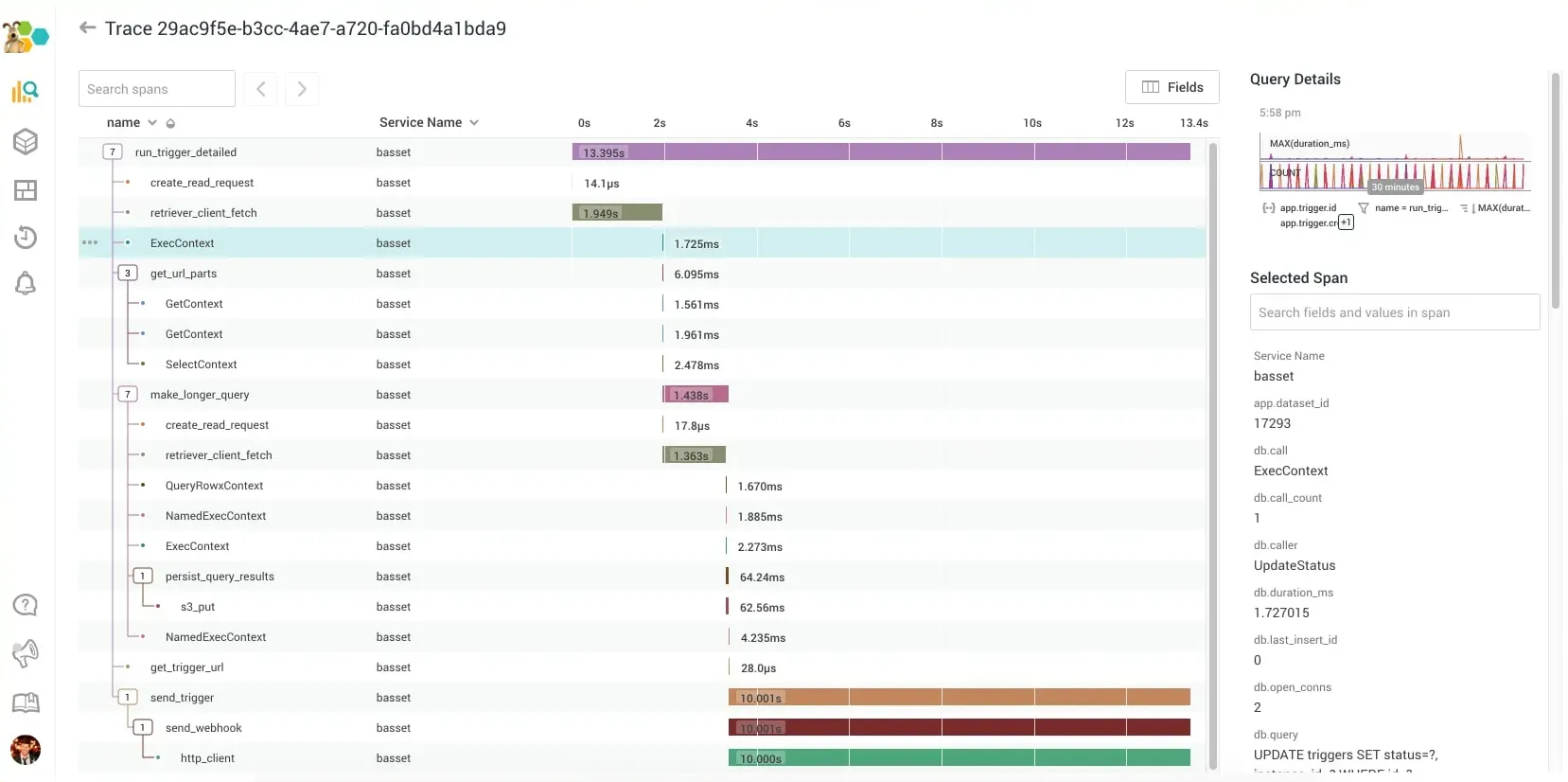
Datadog
Datadog is a comprehensive cloud-scale monitoring and observability platform designed for modern applications. It allows teams to gain deep insights into the performance, availability, and overall health of their systems.
Datadog recommends using Datadog agent to instrument applications. Although you can also use OpenTelemetry libraries to generate telemetry data and send it to SigNoz. However, the support of OpenTelemetry data visualization is not as great as it is for Datadog agent.
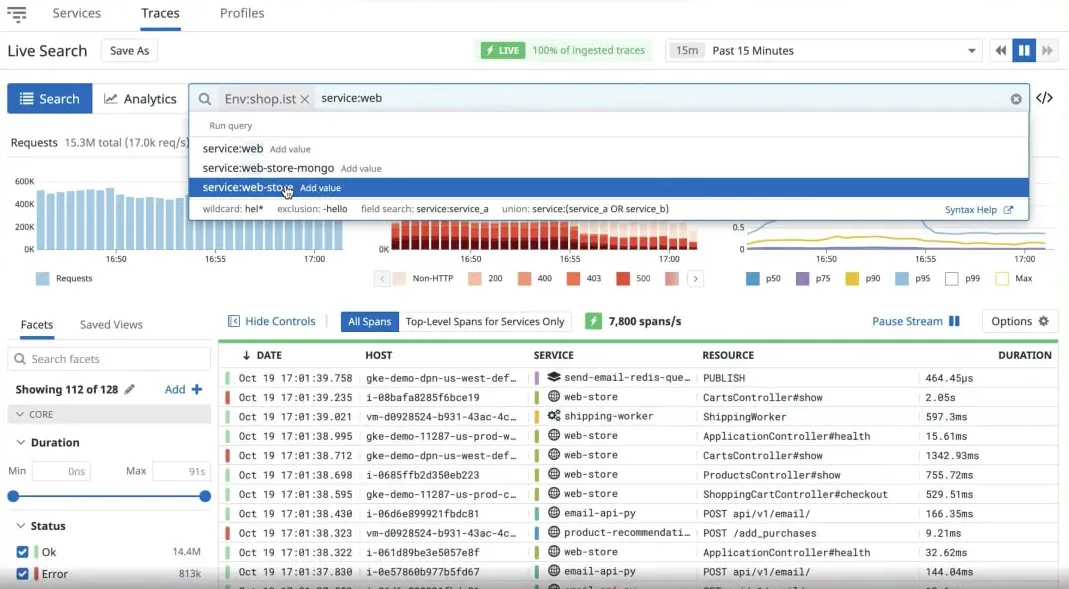
New Relic
New Relic is one of the oldest companies in the application performance monitoring domain. It offers a suite of solutions to enterprises for effectively tracking and enhancing the performance of their applications.
You can send OpenTelemetry data to New Relic for further analysis. Although their support for OpenTelemetry visualizations is not as great as it is for their proprietary New Relic agent.
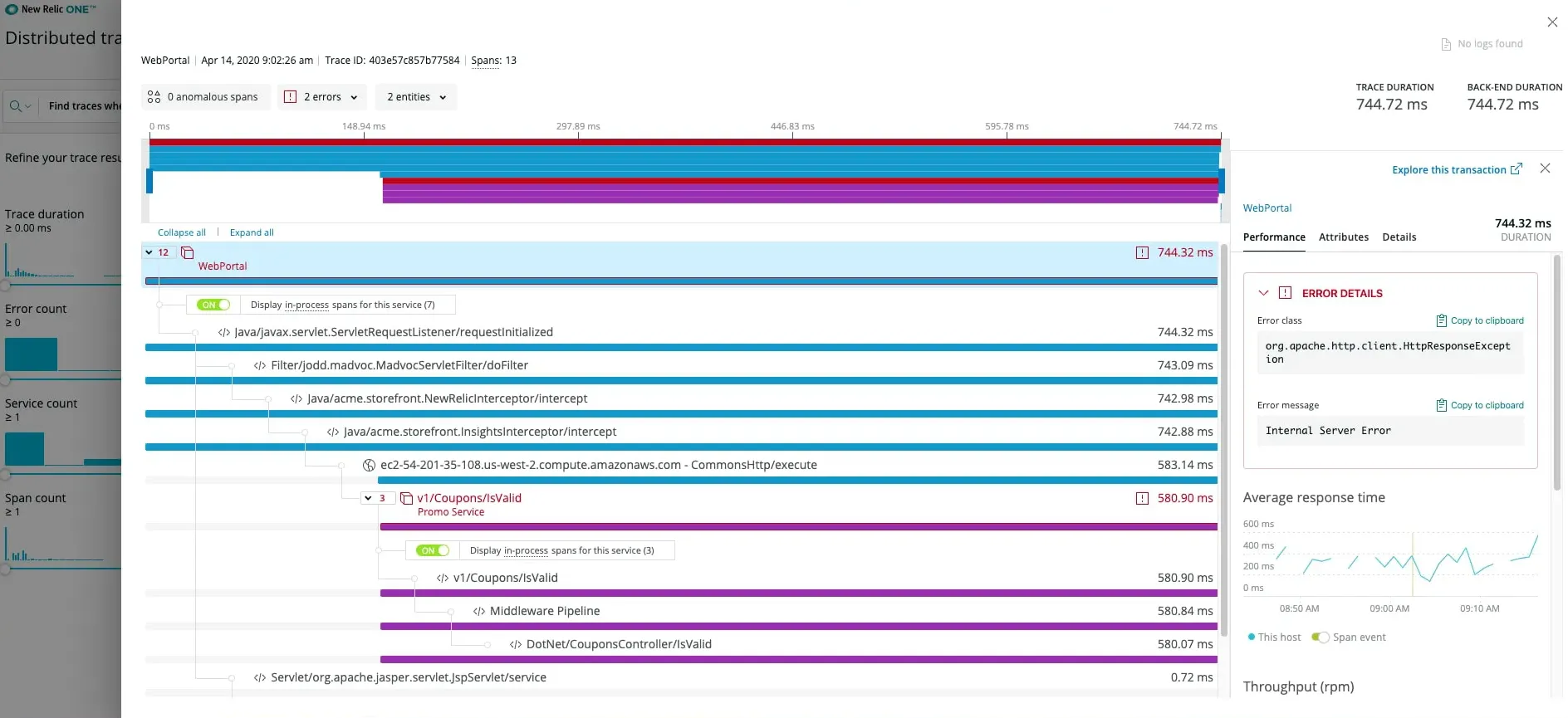
Choosing the right OpenTelemetry tool
Here are some points that you should keep in mind before choosing an OpenTelemetry tool:
Support for all distinct signals of OpenTelemetry
Currently, OpenTelemetry collects telemetry data in three distinct signals, namely, logs, metrics, and traces. Setting up a robust observability framework requires the use of all three signals. An OpenTelemetry APM should be able to ingest and visualize all three signals.
Native support for OpenTelemetry semantic conventions
In OpenTelemetry, every component of a distributed system is defined as an attribute. The attribute is nothing but a key-value pair. These attributes are defined by the OpenTelemetry specification as OpenTelemetry semantic conventions. An OpenTelemetry APM should have native support to store data with OpenTelemetry semantic conventions. Existing observability vendors usually transform the data collected using OpenTelemetry semantic conventions into their propriety formats. But OpenTelemetry has a huge list of semantic conventions that might not be fully utilized in such scenarios.
Should have features that utilize OpenTelemetry data
A good OpenTelemetry tool should enable users to utilize OpenTelemetry data to generate insights. An OpenTelemetry-native tool like SigNoz provides features like exception monitoring and aggregates on trace data based on OpenTelemetry data.
Open Source
OpenTelemetry is an open-source standard with a huge community backing. It is testimonial to the fact that community-driven projects can solve large, complex engineering problems. It is not necessary for the OpenTelemetry tool to be open source. However, having an open-source OpenTelemetry APM can enable you to have a full-stack open-source solution. Open-source solutions have more flexibility, and if you self-host, you don’t need to worry about things like data privacy.
A solution built natively for OpenTelemetry can be a good choice for an OpenTelemetry tool. We, of course, suggest SigNoz as it’s built to support OpenTelemetry data from day 1. But you can keep the above points in mind before selecting an OpenTelemetry tool.
Getting started with SigNoz
SigNoz Cloud is the easiest way to run SigNoz. Sign up for a free account and get 30 days of unlimited access to all features.
You can also install and self-host SigNoz yourself since it is open-source. With 24,000+ GitHub stars, open-source SigNoz is loved by developers. Find the instructions to self-host SigNoz.
Related Posts
Comparing Datadog’s and New Relic’s support for OpenTelemetry
